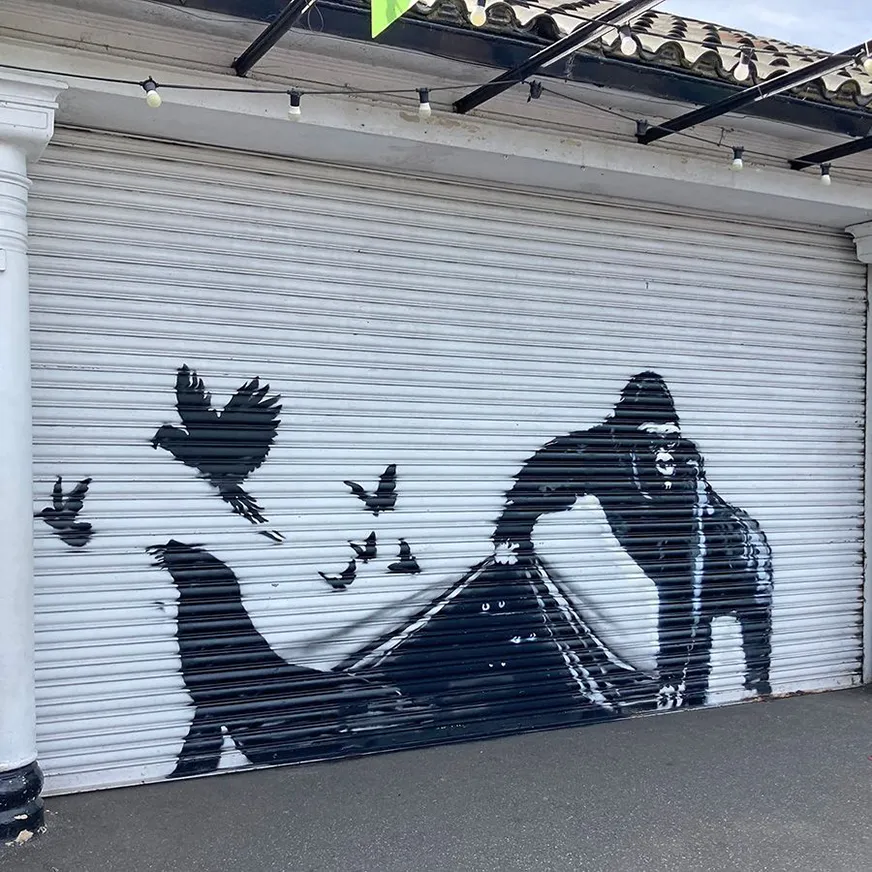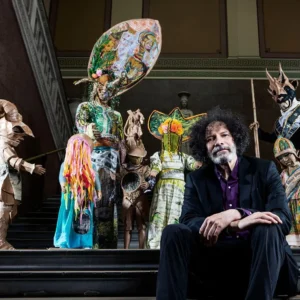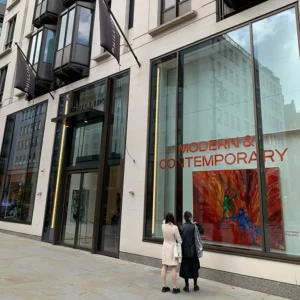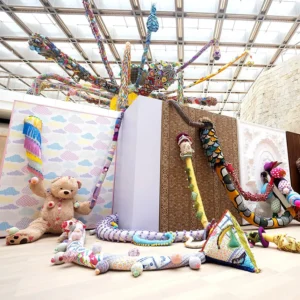In 2024, the art world navigated a landscape of bold innovation, sharp controversy, and shifting economics. From the urgency of environmental activism to groundbreaking auction records, art proved its role as both a mirror and a catalyst for change, reshaping the cultural narrative.
Banksy’s New Murals
Banksy’s London murals, “London Zoo” series, were unveiled in August. Over nine days, animal-themed murals, including a wolf, monkeys, and a goat, transformed urban spaces into whimsical reflections on societal themes.
While interpretations ranged from environmental concerns to playful escapism, Banksy’s Pest Control Office clarified the series’ primary aim was to spark joy and creativity.
The King Charles III Portrait
King Charles III’s portrait by Jonathan Yeo became a lightning rod for criticism. Its crimson haze background ignited debates over imperialist symbolism, and Animal Rising activists later defaced the painting, accusing the monarch of hypocrisy in animal welfare advocacy. Despite the uproar, the artwork remained on display.
Auction Records
The auction market also made headlines, though with tempered enthusiasm. In July, the very first Stegosaurus fossil, Apex, sold for $44.6 million at Sotheby’s New York, setting a new record.
Comedian by Maurizio Cattelan, the famous banana duct taped to a wall, brought $6.2 million at Sotheby’s in November. The absurdity of the piece—emphasized by the fact that it started as a $0.35 banana—emphasized how the art market interacts with inequality in wealth and cultural criticism.
At $121.1 million, René Magritte “L’empire des lumières” broke the previous artist record.
The art market did face a noticeable slowdown. The combined value of the top 10 auction sales in 2024 was $512.6 million, which was a considerable decrease from prior years.
Argote’s Pigeon
When Iván Argote’s 17-foot-tall pigeon sculpture, “Dinosaur,” was placed on Manhattan’s High Line, public art actually reached new heights. The work reinterpreted the common bird of New York as a symbol of tenacity and exclusion.
Environmental Activism
One of the year’s most headline-grabbing incidents was the defacement of Stonehenge by Just Stop Oil activists. The group sprayed orange powdered paint on the historic landmark in June, sparking widespread outrage. The timing, just before the summer solstice, added to the act’s symbolism but also amplified criticism.
Prime Minister Rishi Sunak condemned the action as a “disgraceful act of vandalism,” encapsulating the broader debate over the ethics of targeting cultural heritage to draw attention to the climate crisis.
The Rise of AI Art
The broader art world reflected on the interplay between art and its audiences. A resurgence of interest in AI-generated art raised questions about creativity, authenticity, and ownership.
Initiatives emphasizing accessibility and inclusion sought to make art more participatory, challenging traditional hierarchies. Artists and institutions alike explored ways to balance commercial success with the need for ethical and meaningful engagement.
2024: An Interesting Year
Art in 2024 reaffirmed its cyclical nature, sparking joy, controversy, and engaging with broader cultural dialogues. Conflict often grants these moments longevity, securing their place in art history.





